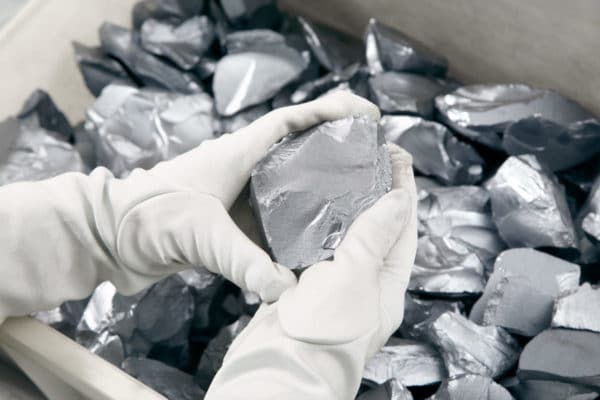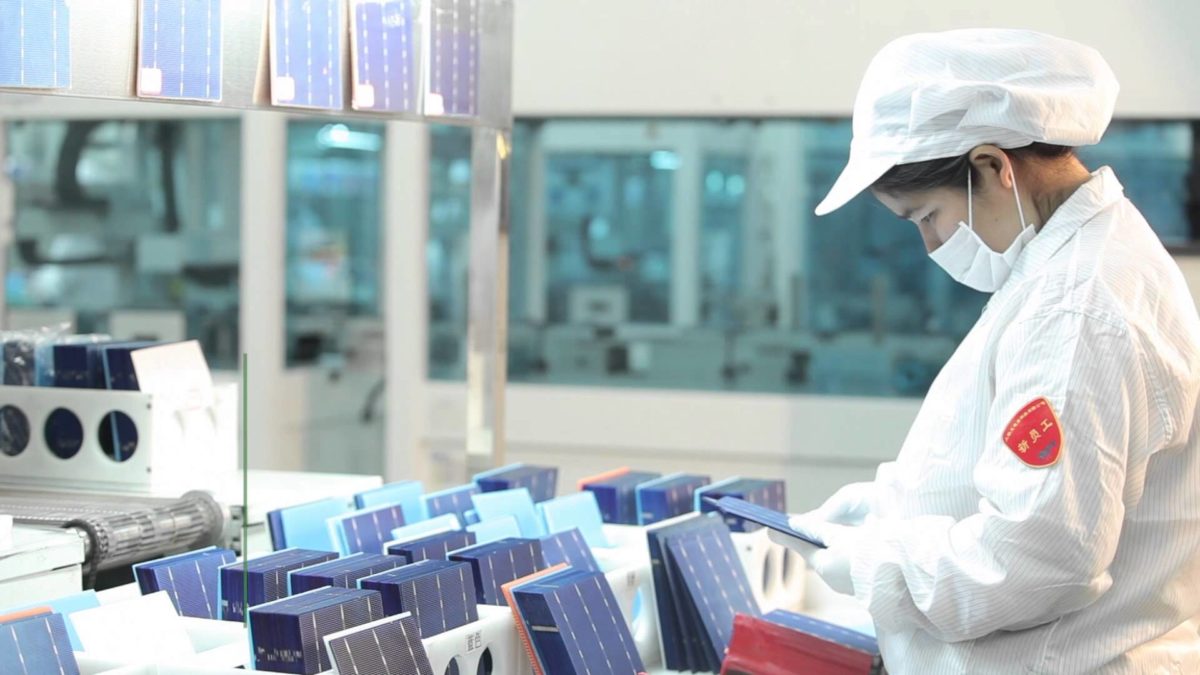The Department of Commerce (DOC) released a memo that provides some significant clarifications on its ongoing investigation into solar cell and module manufacturers in Malaysia, Thailand, Cambodia, and Vietnam.
While much of the memo is reiterated and more clearly-defined information than we have had since it was first announced, the memo includes two key developments:
- Wafers produced outside of China with polysilicon sourced from China are not subject to these circumvention inquiries
- In the event of an affirmative preliminary or final determination, the tariff rate instituted to any of the countries under investigation will be equal to the Chinese manufacturer’s and/or exporter’s company-specific rate being circumvented in the first place
The first conclusion means that, so long as manufacturers are using non-Chinese polysilicon in their products, they are in no violation (more on how this changes the US available module supply outlook to follow), while the second provides considerable clarity as to how tariffs would be instituted and at what rate: a significant unknown prior to this memo.
American Clean Power Association (ACP) CEO, Heather Zichal, put out a statement saying that the memo “perpetuates the market confusion that is currently stifling the US solar industry.” ROTH, in an industry note, reiterated this point, saying that it provided little clarity and qualified as “no news at all.”
Zichal continued to offer her two main takeaways:
- “Solar wafer manufacture outside of China is not meant to be within the scope of this circumvention case. This should not have been a question because the precedent on the substantial nature of cell manufacturing is clear and has been for over a decade.”
- “At the same time, Commerce is foreshadowing a tariff structure that is ambiguous and unstable at best, and will very likely extend the project-killing effect that Commerce has already caused.”
How much non-Chinese polysilicon is there?
So manufacturers are free to continue exporting modules to the US, so long as those modules use wafers and ingots manufactured outside of China. Great, simple enough. So how much available polysilicon manufacturing is there outside of China?
To answer this, pv magazine spoke with Joseph Johnson, manager of Market Intelligence at Clean Energy Associates (CEA). The reality, at least so far, is not an optimistic one.

Image: Daqo
“It’s not a good picture at all,” said Johnson, who went onto estimate that around 97% of all ingots and wafers manufactured today are being made in China, a percentage demographic that he does not see changing in the near future.
“Today, if you’re looking at the market by the end of this year, we’re tracking around 16.5 GW of nameplate, non-China ingot and wafer manufacturing. A large bulk [7 GW] is only going to really be usable by the end or later to this year from Jinkosolar… So when you look at it, it’s essentially around nine to 10 GW of capacity that’s likely to be operable this year. And that figure starts to get even smaller when you look at how long some of these older capacities have been on the market.”
These older capacities that make up a large portion of the roughly 10 GW pool of modules available to the US are not applicable to the new industry standard 182 mm cell size, meaning the available capacity for use in modern utility scale installations shrinks even more.
While the outlook is certainly less than optimal, all of the capacity set to come in the near future will be from tier-1 manufacturers making modules for modern utility applications. As referenced earlier, Jinkosolar will soon have production up and running at its $500 million, 7 GW ingot and wafer manufacturing facility in the coastal economic zone of Vietnam’s Quang Ninh province. In addition, JA Solar is expected to increase its module and ingot manufacturing operations in Vietnam to 6 GW by 2023. The company also has 1.5 GW of cell capacity in Malaysia. Longi also has some capacity that is expected to be usable for export to the US.

Image: 1366 Technologies
Johnson went on to assert that many of these tier-1 Chinese manufacturers were already looking to move their ingot and wafer operations outside of China, partially triggered by the alleged use of forced labor in China’s Xinjiang province and resulting fallout. While that move was already in progress, the DOC investigation has begun to serve as a further catalyst.
Johnson said that, in the short term, existing tier-1 manufacturers will be able to mobilize quickest to fill capacity needs, but the investigation also opens to door for more prominent ingot and wafer manufacturing operations across Europe and in India.
“So in India, there’s certainly a pretty big push to get some base ingot and wafer production online,” said Johnson. “There’s also a pretty big resurgence in Europe. MoreSun and Norwegian Crystals, both of those suppliers have announced some pretty aggressive ramp up timelines to get multi-gigawatt scale and get ingot production online and up from just one gigawatt today.”
Once you get away from the largest players with the most resources, Johnson said, timelines increase:
“The timelines for those are probably going to be pretty long, four to five years, since a lot of this know-how has to be either purchased, or researched, or developed in house, which is likely to really prolong that timeline of actually bringing non-China options to the market.”
Calling for an end
Nationally, sentiment is rising against the DOC investigation, as 22 Senators and two governors have officially called on DOC to deliver an expedited and negative preliminary decision.
Joining Governor Newsom’s call is Indiana Governor, Eric Holcomb, who wrote to Secretary of Commerce Gina Raimondo saying:
I urge the Department of Commerce to reach a determination as quickly as possible to restore clarity and certainty regarding solar products, so the State of Indiana, our utilities, and other private sector partners can better understand and plan for an economical energy transition, in which solar is poised to play a key role.
Indiana has been one of the states hit hardest by the DOC investigation’s fallout. Northern Indiana Public Service Company uncertainty and delays brought to the solar panel are forcing the utility to delay the closure of two coal generation plants from to 2025, back from an original date of 2023. According to NIPSCO, most solar projects that the utility originally scheduled for completion in 2022 and 2023 will experience delays of approximately 6 to 18 months. In total, NIPSCO’s project uncertainties represent roughly $2 billion in delayed investment.
Indiana was one of 13 states in the Solar Energy industries Association’s (SEIA) most recent publication of its anti-circumvention investigation impact survey to have 100% of respondents share that they were experiencing delayed or canceled module supply. It also joined Idaho as the two states to have respondents report that 100% of the state’s development pipeline has been delayed by the DOC investigation.
Those who responded to SEIA’s survey with specific project data outlined that, so far, 3.6 GW of solar projects have been delayed or canceled as a direct result of the investigation, the fourth-most of any state in the country. SEIA projected Indiana to add 6.7 GW of solar over the next 5 years, meaning that over half of that pipeline is already in jeopardy.
As for hopes of a speedy resolution, a letter that Secretary Raimondo sent to 14 legislators offers DOC’s perspective as to why the investigation can’t be dropped like a hot and highly unpopular potato
First, let me assure you that the Biden-Harris Administration remains committed to addressing climate change by reducing reliance on fossil fuels. We stand ready to work with you and Congress to advance legislation that would provide incentives to bolster renewable energy. In addition, the Department of Commerce stands ready to work with Congress to diversify our supply chains and develop greater domestic solar manufacturing capacity here at home.
After some case background, Raimondo assures each of the 14 legislators that “like all trade remedy proceedings, Commerce will conduct these circumvention inquiries in a fair and transparent manner, and in accordance with all applicable US laws and regulations.” As Raimondo puts it, DOC is required by statute to investigate a claim that companies operating in other countries in the region are trying to circumvent existing duties. DOC is merely doing its job.
This content is protected by copyright and may not be reused. If you want to cooperate with us and would like to reuse some of our content, please contact: editors@pv-magazine.com.









It’s long overdue that US Manufacturing of goods we purchase gets restored to levels following WW-II. Value added WORK from raw materials to finished goods employed most Americans with pay that allowed them to buy what they made.
I remember as a kid in the mid-40s, popping open a stamped metal toy car made bent over tabs in slots holding the bottom on with its wheels and axels. The inside of the car top still had the lacquered label of a recycled beer can with the 3-Ring Ballantine Sign. It’s been downhill ever since.
Is anything Made in the USA, besides Chinese Food?
The memorandum draws the line at wafering, not at ingot and wafering.
In the memorandum the specifically state wafer production:
“Wafers produced outside of China with polysilicon sourced from China are not subject to these circumvention inquiries”
Also, in the memorandum they separate out wafer production and ingot production as discreet production process steps.
“For example, the manufacturing process requires that polysilicon be refined, and formed into ingots, which are then sliced into wafers. The wafers are then subsequently doped and converted into solar cells, which are then assembled together with numerous other materials into
modules.”
In Auxin’s petition they specifically state, “these are discrete production steps that may occur in different plants or locations…”
Thus, the memorandum actually communicates that the wafering production process is the line drawn in the sand, not ingoting and wafering.